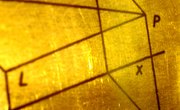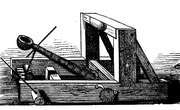Learning science hands-on can engage students in a way that simply reading from a textbook often can't, and it's important that students get a good grasp of these topics. There are many games and activities designed to help teach physics in the classroom. From games designed to teach about atomic theory to activities involving simple machines, there are free games and learning aides for nearly every grade level and subject connected to physics.
Atomic Theory
The "Elegant Universe" series includes games designed to teach students about elementary particles and even introduces them to the basics of string theory. For grades 6 through 8, there are activities such as building a model of a Carbon 60 molecule, and a game to teach students to understand half-life and the ways it's used to determine the ages of given materials.
Energy
Energy is an important topic these days and there are games designed for grades 3 through 12. One such activity involves student teams that research alternative fuel methods or technologies and develop proposals to decrease the carbon footprint. Another explores Einstein's theory of relativity (E=mc2) by comparing the different fuel requirements one would need to make a trip to Pluto. For grade 3 through 5, an activity called "Fire Wars" teaches students to identify fire risk factors near wilderness areas.
Gravity and Forces
Gravity and the forces can be some fun learning when presented in a way that makes it interactive for students. For these games students from grades 3 through 8 can learn about these forces through building model avalanches and structures, or perform a classroom egg bungee-jump to illustrate how gravity and the forces work. Grades 6 through 12 can use a balloon and aluminum foil model and learn about the changes in density and volume that occur as a star becomes a black hole.
Simple Machines
There are even games and activities to illustrate the power of simple machines. Some games allow students to raise a brick with skewers to demonstrate the uses of levers (grades 3-8), while others teach students to change the direction of force through the use of pulleys (grades 6-8). Students can even build a working model of a trebuchet (grades 6-12) to illustrate the more complex usages of levers.
Related Articles
References
Writer Bio
Marion Sipe has been a freelance writer, poet and fantasy novelist since 2000. Her work appears in online publications including LIVESTRONG.COM and eHow Home and Garden. Her fiction has been publish in Alienskin Magazine, Alternatives, and the Flash! anthology. Homeschooled, she spent her youth flitting around the country.











